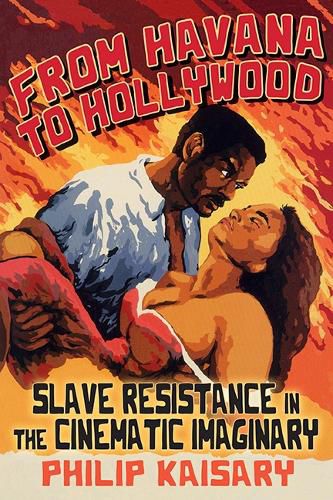Readings Newsletter
Become a Readings Member to make your shopping experience even easier.
Sign in or sign up for free!
You’re not far away from qualifying for FREE standard shipping within Australia
You’ve qualified for FREE standard shipping within Australia
The cart is loading…






Centers Cuban cinema to explore how films produced in Havana or Hollywood differently represent Black resistance to slavery.
From Havana to Hollywood examines the presence or absence of Black resistance to slavery in feature films produced in either Havana or Hollywood-including Gillo Pontecorvo's Burn!, neglected masterpieces by Cuban auteurs Tomas Gutierrez Alea and Sergio Giral, and Steve McQueen's Oscar-winning 12 Years a Slave. Philip Kaisary argues that, with rare exceptions, the representation of Black agency in Hollywood has always been, and remains, taboo. Contrastingly, Cuban cinema foregrounds Black agency, challenging the ways in which slavery has been misremembered and misunderstood in North America and Europe. With powerful, richly theorized readings, the book shows how Cuban cinema especially recreates the past to fuel visions of liberation and asks how the medium of film might contribute to a renewal of emancipatory politics today.
$9.00 standard shipping within Australia
FREE standard shipping within Australia for orders over $100.00
Express & International shipping calculated at checkout
Centers Cuban cinema to explore how films produced in Havana or Hollywood differently represent Black resistance to slavery.
From Havana to Hollywood examines the presence or absence of Black resistance to slavery in feature films produced in either Havana or Hollywood-including Gillo Pontecorvo's Burn!, neglected masterpieces by Cuban auteurs Tomas Gutierrez Alea and Sergio Giral, and Steve McQueen's Oscar-winning 12 Years a Slave. Philip Kaisary argues that, with rare exceptions, the representation of Black agency in Hollywood has always been, and remains, taboo. Contrastingly, Cuban cinema foregrounds Black agency, challenging the ways in which slavery has been misremembered and misunderstood in North America and Europe. With powerful, richly theorized readings, the book shows how Cuban cinema especially recreates the past to fuel visions of liberation and asks how the medium of film might contribute to a renewal of emancipatory politics today.